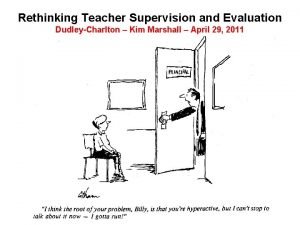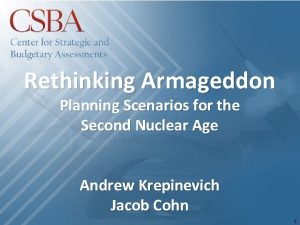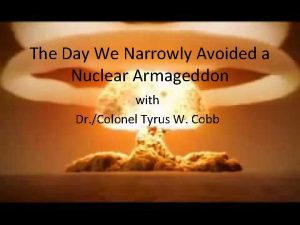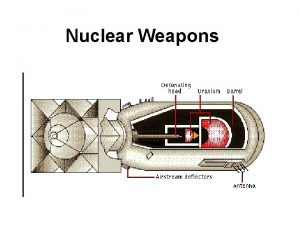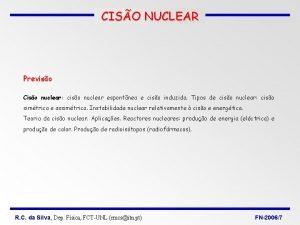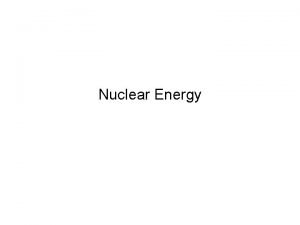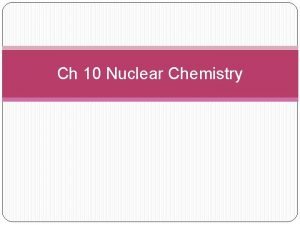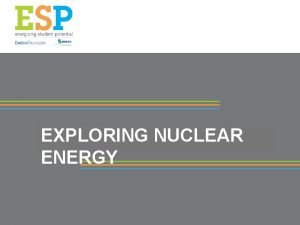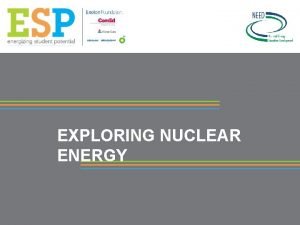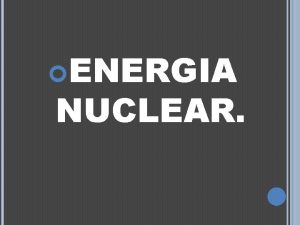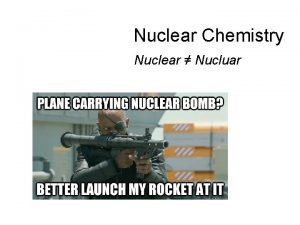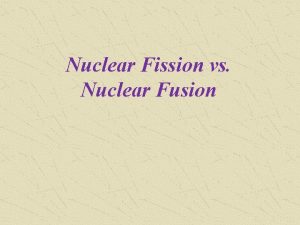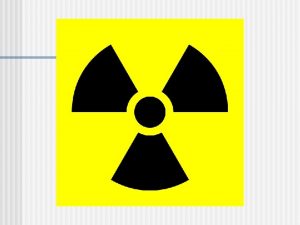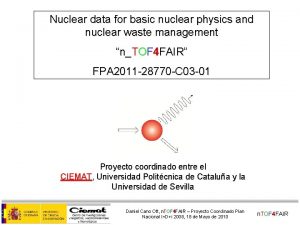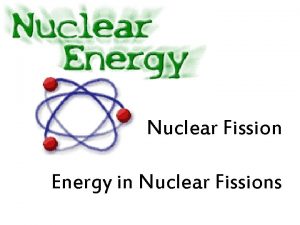Rethinking Armageddon Planning Scenarios for the Second Nuclear





























- Slides: 29

Rethinking Armageddon Planning Scenarios for the Second Nuclear Age Andrew Krepinevich Jacob Cohn 1

Presentation Roadmap Click to edit Master title style • Project Overview • Why Scenarios? • Five Scenarios • Selected Observations and Insights • Next Steps 2

Project Overview 3

Project Click to edit Objectives Master title style • How can scenarios support efforts to craft policies designed to reduce the chances of nuclear use? • What would constitute a representative set of scenarios that are characteristic of the Second Nuclear Age, rather than the preceding age? • Given these scenarios, what are some of the first-order implications they raise with respect to nuclear policy, strategy, and force posture? 4

Why Scenarios? 5

Scenarios Click to edit Master title style Scenarios: A tool for helping us plan in an uncertain world; an antidote to “willful ignorance” • A need for effective strategic thinking is most obvious in times of accelerated change • While the future is fundamentally unpredictable; it is not wholly uncertain 6

Click to. Why edit. Scenarios? Master title style • Do not “predict” the future; rather, they help us to think about the future • Help identify what factors will most shape the future • Understand how the environment might change • Recognize when the environment is changing • Know how to respond when change is detected 7

“Drivers” Click to edit Master title style • Geostrategic: Multipolar regional and global competitions • Geopolitical: Regime characteristics; external sources of influence • Geographic: Proximity and “interspersing” • Cultural: The Human Condition; differing perspectives on cost, benefit and risk 8

“Drivers” Click to edit Master title style • Military-Technical: – Advanced design nuclear weapons – The maturation of the precision-guided weapons regime – Advanced air and missile defenses – Cyber munitions • Military Capabilities: Size and composition of strategic forces • Proliferation Dynamics: Static, linear or non-linear? • Temporal: Mobilization, early warning, command-control 9

Five Scenarios 10

Scenarios Click to edit Master title style • Iran, Israel and the Crisis Neither Sought • An “N-Player” Middle East Confrontation • Russia’s “Escalate to De-escalate” threat • North Korea’s “Rational” Option • China and the Long-Term Great Power Competition 11

Middle East

Iran to andedit Israel to thetitle Brinkstyle Click Master Scenario (2016 – 2020) • Economic: Joint Agreement unfreezes Iranian assets and ends many economic sanctions • Proxies: Tehran’s “slow squeeze” of Saudi Arabia, the GCC, and Israel • Crisis: Third Lebanon War expands to direct conflict between Israel and Iran; both sides concerned about preemptive nuclear attack Destabilizing Factors • Geographic proximity and limits of Early Warning/C 2 • Predelegation of authority • Nuclear doctrine 13

Theto“N-Player” Problem Click edit Master title style Scenario (2016 – 2020) • Excursion from previous scenario focusing on the “N-Player” problem • Saudi Arabia, Egypt, Turkey, and the UAE expect same nuclear freedom as granted to Iran • Saudi Arabia jumpstarts nuclear program with Pakistan’s assistance • September 2018, Pakistan deploys nuclear IRBMs to Saudi Arabia Destabilizing Factors • Attribution problem • Will the U. S. protect its allies equally? 14

Eastern Europe

Sub-Conventional Aggression in style Latvia Click to edit Master title Scenario (2016 – 2018) • Economic: Falling oil and gas prices, continued economic sanctions • Security: Increasing insecurity as ISIS attributed terror attacks mount • Timing: Low domestic approval and weakening internal control near election • Crisis: Creeping aggression in Latvia, incorrectly assuming NATO would not intervene, Russia backed into a losing conventional position Destabilizing Factors • Alliance management • Deterring the “escalate to deescalate” threat • Ability of non-nuclear weapons to fill nuclear missions • Gaps in the escalation ladder 16

North Korea

North. Master Korea title style Click to edit Scenario (2016 – 2021) • • Economic: Economic reform backfires, by 2019 the situation is desperate Nuclear: Believed to have nuclear capable Taepodong-3 s and Nodongs Arms Control: Concessions viewed as a path to regime change Crisis: Nuclear strike on Japan as last ditch effort to stave off regime collapse Destabilizing Factors • (Mis)perceptions of leaders • Alliance management • Vulnerability of missile defenses to Haystack tactic • Vulnerability of small arsenals to missile defense 18

Long-Term Competition with China and Russia

Long-Term Competition Click to Multipolar edit Master title style Scenario (2017 – 2020) • Economic: Economic slowdown leaves regime reliant on nationalism • Geopolitical: Setbacks in South China Sea/East China Sea stress last pillar • Military-Technical: U. S. CPGS development and Russian violation of INF treaty raises concerns over vertical escalation vulnerability • Nuclear: Fissile material is the principal near-term barrier to growing China’s arsenal; decision made to seek balance with U. S. and Russia Destabilizing Factors • What force structure is needed for a multipolar competition? • Avoiding an arms race & the role of arms control • Effect of geographic proximity – nuclear overflight 20

Selected Insights and Observations 21

Selected Insights and Observations Click to edit Master title style • The “Nuclear Balance” is now the “Strategic Balance” – Wide range of capabilities; many non-nuclear – New vertical and horizontal escalation ladders • The Bipolar structure is transitioning to a Multipolar structure – Global and regional competitions – Strategies for deterring one rival may weaken deterrence with another – A nuclear “great game” – Potential for non-nuclear powers to play 22

Selected Insights and Observations Click to edit Master title style • The Challenge of Extended Deterrence – What is reassuring for one may not be for another – Need to review along with revised escalation ladders • The Death of “Rational Strategic Man” – Single, rational unitary actor model long discredited – Crises lead to thinking “fast, ” not “slow” – Prospect Theory suggests coercion strategies may be a “dead end” 23

Selected Insights and Observations Click to edit Master title style • The Erosion of Crisis Stability – Geographic Proximity, Early Warning, Command-and. Control, Pre-delegation Authority and Human Cognitive Limitations – Cyber Munitions and Catalytic War – Problems with Prompt Attribution – Blurring of Strategic and Non-Strategic Strikes – Undeclared Arsenals – Multiple Extended Deterrence Commitments – Haystack Attacks – 1914 Redux: The Mobilization of Missile Defenses 24

Selected Insights and Observations Click to edit Master title style • Arms Control – From New START to the Washington Naval Treaty – “Multidimensional” Problems – “Multipolar” Problems – Enforcement and Verification Challenges • Implications for the U. S. Strategic Posture – Old metrics may no longer apply – More options needed – Position matters in a mobilization race – Potential gap between commitments and capabilities (extended deterrence) – Which scenarios are accorded priority? – A need to think long term 25

Next Steps 26

Next Steps Click. Selected to edit Master title style • Undertake Strategic Net Assessments on global, regional and functional aspects of the competition • Comparative assessment of strategic doctrines • Identify strategic planning issues that emerge across scenarios • Develop a set of the “missing” scenarios (e. g. ; India-Pakistan; nuclear war termination) 27

Next Steps Click. Selected to edit Master title style • Develop a revised set of metrics to guide efforts to assess the strategic force balance(s) • Update horizontal and vertical escalation ladders • Assess prospects for regulating the strategic competition (such as a contemporary version of the Washington Naval Treaty) • Examine ongoing efforts among the competitors to enhance their strategic forces, identifying major asymmetries in doctrine, forces and their implications 28

Questions? 29
 Plain of esdraelon
Plain of esdraelon üverse
üverse Armageddon revelation 16
Armageddon revelation 16 Jehovah's witnesses armageddon 2034
Jehovah's witnesses armageddon 2034 Lesson 15 nuclear quest nuclear reactions
Lesson 15 nuclear quest nuclear reactions Fisión nuclear vs fision nuclear
Fisión nuclear vs fision nuclear Rethinking business process
Rethinking business process Cdio example
Cdio example Rethinking the 4 p's
Rethinking the 4 p's Ubígua
Ubígua Rethinking education: towards a global common good?
Rethinking education: towards a global common good? Kim marshall rubric
Kim marshall rubric Rethinking file mapping for persistent memory
Rethinking file mapping for persistent memory Rethinking the value of network pruning
Rethinking the value of network pruning Rethinking file mapping for persistent memory
Rethinking file mapping for persistent memory What is the fundamental rethinking of business processes
What is the fundamental rethinking of business processes 27 miles per gallon into kilometers per liter
27 miles per gallon into kilometers per liter Kontinuitetshantering
Kontinuitetshantering Typiska drag för en novell
Typiska drag för en novell Tack för att ni lyssnade bild
Tack för att ni lyssnade bild Vad står k.r.å.k.a.n för
Vad står k.r.å.k.a.n för Varför kallas perioden 1918-1939 för mellankrigstiden
Varför kallas perioden 1918-1939 för mellankrigstiden En lathund för arbete med kontinuitetshantering
En lathund för arbete med kontinuitetshantering Personalliggare bygg undantag
Personalliggare bygg undantag Personlig tidbok
Personlig tidbok Sura för anatom
Sura för anatom Förklara densitet för barn
Förklara densitet för barn Datorkunskap för nybörjare
Datorkunskap för nybörjare Tack för att ni lyssnade bild
Tack för att ni lyssnade bild Debatt mall
Debatt mall











